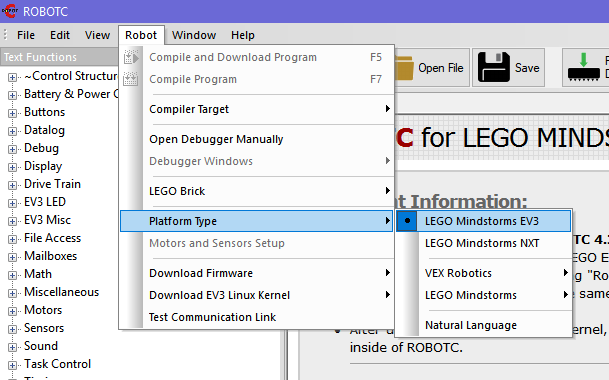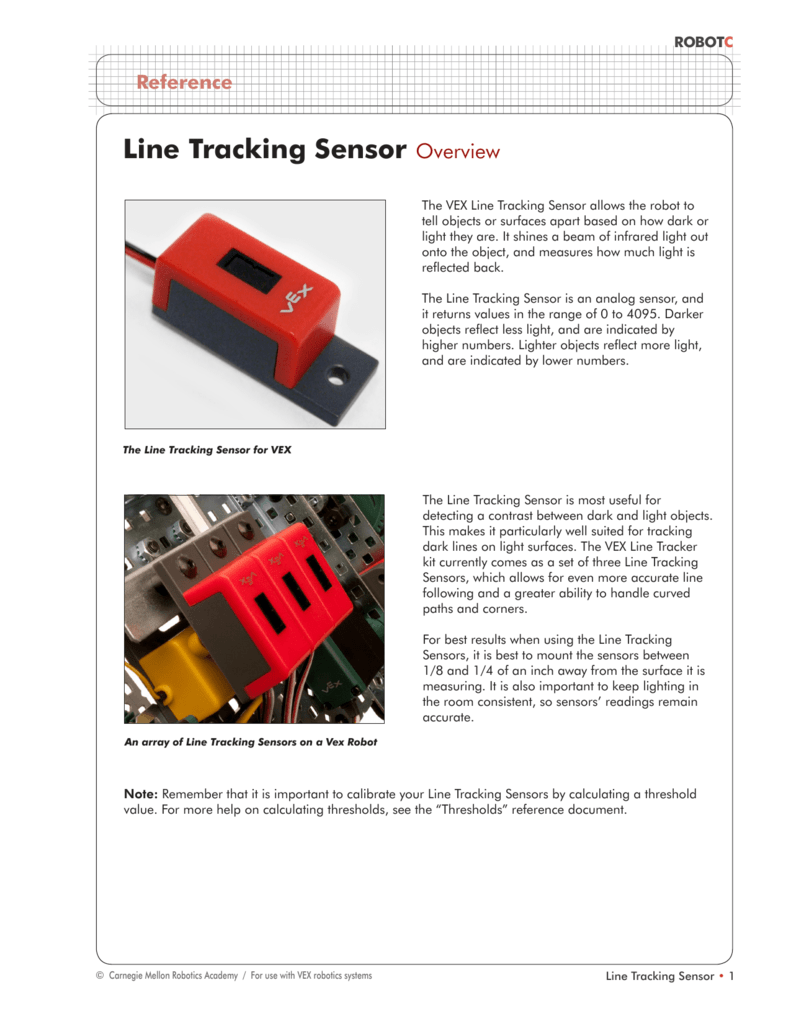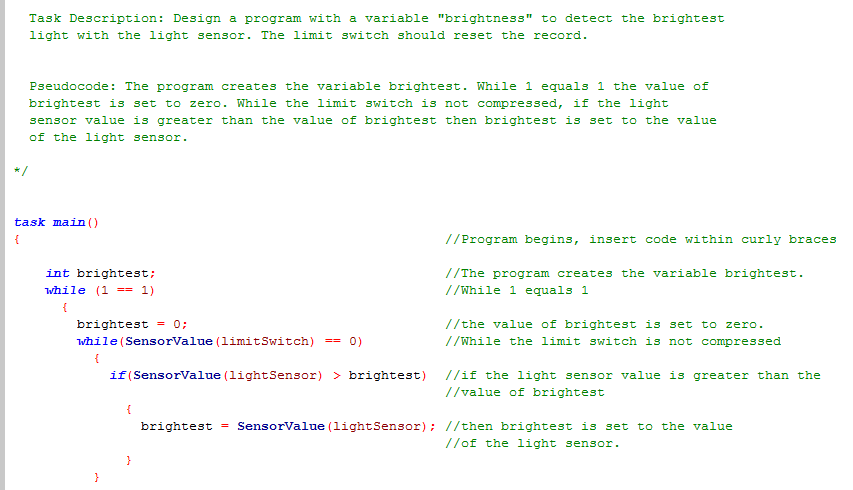
Use a dark and light color within 1/4 - 1/8 in. Change the line follower immediate environment and observe the effect on the lineFollower value. View the value shown beside the lineFollower (in1) label. If not, choose “Continuous” from the Refresh drop-down menu. In the Program Debug pop-up, ensure that inputs and outputs are being refreshed continuously. Enter several values ranging from -127 to 127, and then press Enter on the keyboard or click away from the value entry window after each value is entered.ī. Record your observations in your engineering notebook, including the threshold power setting necessary for the motor to turn. Enter several values ranging from -127 to 127, then press Enter on the keyboard or click away from the value entry window. Click the Motors tab at the bottom on the window. Increase the debugger window area at the bottom to view the motor and sensor values as shown below.Ī. Click Robot, Debugger Windows, and then Sensors.Į. If there is not a Sensors tab available at the bottom of the window, add it using the following steps. This indicates that it will be displayed in the Debug Window.ĭ. Click Robot, Debugger Windows, and then confirm that Motors has a check mark beside it. View motor and sensor debugger windows.ī. Obtain the teacher’s approval before proceeding to the next step. Save the file in the same location used earlier, A3_1_1.ĩ. Add the motors and sensors as shown below. Leave Task Description and Pseudocode blank. Complete the Project Title, Team Members, Date, and Section. Click File, Save As, select the folder that the teacher designated, and then name the file A3_1_1.ĭ.

Verify that Automatic Selection is selected.Ĭ. Select View, and then Communication Port.
Robotc light sensor Pc#
Note that this can be changed to USB Only to ensure that the PC communicates to the Cortex through the USB cable. Select Robot then VEX ® Cortex Communication Mode. Verify that Natural Language PLTW and VEX 2.0 Cortex are both selected. This is a folder typically with path C:\Program Files (x86)\Robomatter Inc\ROBOTC Development Environment 4.X\Sample Programs\VEX2\PLTW.ī.

Select File, Open Sample Program, and then PLTW. View the IntroToVEXandROBOTC.pptx presentation from slide 17 through 30. Connect the testbed to the computer using the USB A-A cable.ħ. Start the “ROBOTC for VEX Robotics” software.Ħ. At the appropriate time, both teams will exchange testbeds.ĥ. Team B will construct the VEX ® Testbed with the exception of the servo motor and flashlight.Ĭ. Team A will construct the VEX ® Testbed with the exception of the ultrasonic and the light sensor.ī. Within your four student group, form a two-student team known as Team A and a two-student team known as Team B.Ī. View the IntroToVEXandROBOTC.pptx presentation from slide 1 through 16.ģ. Form groups of four and acquire your group’s PoE VEX ® Kit under the direction of the teacher.Ģ.

This will allow you to test the behavior of components before writing a program and to use it as a troubleshooting tool for analyzing program performance.ġ.
Robotc light sensor software#
In this activity you will use the ROBOTC software to monitor inputs and control outputs. The robot processor translates these inputs and activates a response by triggering a motor or light emitter.

Robots behave similarly when the world is sensed through physical touch, ambient light intensity, or distance to a solid object. Through muscle activation, the response can take many forms, including speaking, moving your hand, or running. Based on the input of these senses, your brain makes decisions to activate a response. Most humans use five senses to perceive the world. Robots are similar to humans if you consider that both use inputs and outputs to sense and react to the world.


 0 kommentar(er)
0 kommentar(er)
